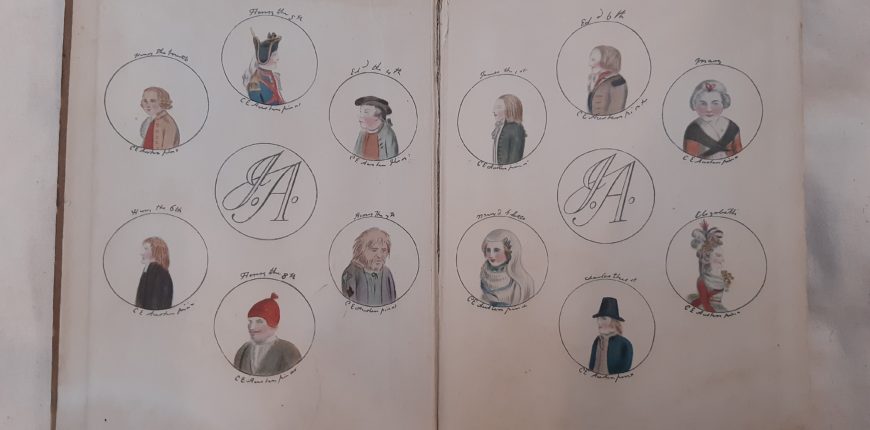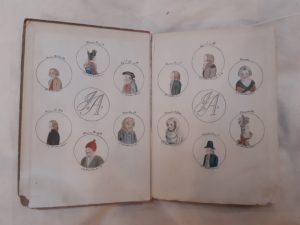An unusual valentine: Jane Austen’s “Love and Freindship”
Donated in 1977 to the Institution as a generous gift from Chawton House, this small volume of Jane Austen's juvenilia has borne witness to a fascinating history of friendship and correspondence.

This small volume, printed by Chatto & Windus in 1922, forms the first published compilation of Jane Austen’s juvenilia, written between the ages of fourteen and sixteen. Featuring an early short story, “Love and Freindship [sic]”, in which Austen contemplates the folly of lovestruck young women falling into fainting fits, this pithy parody of a romance anticipates similar characters in her later novels, such as Marianne Dashwood in Sense & Sensibility (1811), Lydia Bennet in Pride & Prejudice (1813), and Catherine Morland in Northanger Abbey (1818). Sharp and satirical, this piece provides an interesting insight into the young writer’s views on love.
Aside from the extract which gives this volume its title, however, this publication also contains other early Austen pieces, gathered from the manuscripts later entrusted to Austen’s sister, Cassandra. A particular highlight is her “History of England” by a “partial, prejudiced, and ignorant historian,” which discusses the quirks and caprices of the country’s historic Kings and Queens. Accompanied by watercolour illustrations in which Austen imagines her family, in contemporary clothes, acting out the parts of these acutely-drawn figures from history, Austen’s careful depictions indicate at an affectionate familiarity beneath the wry humour.

Endpaper printed with watercolour illustrations by Jane Austen.
Austen was also a great letter writer, and in this compilation, we also witness her earliest foray into epistolary fiction. Her tendency to write novels in letters was partly inspired by her own love of Samuel Johnson’s Clarissa (1748), a work which she affectionately satirises. In “Love and Freindship,” Austen imagines her tale unfolding through the eyes of two flawed but earnest writers, a stepping stone towards the impassioned letter from Captain Wentworth, declaring his love to Anne, in her final novel, Persuasion (1818). Likewise, “Lesley Castle,” written when Austen was only sixteen, is described as an “unfinished novel in letters.” “A collection of letters” follows a similar model.

Frontispiece, Jane Austen, Love and Freindship, Chatto & Windus, 1922
It is worth noting that whilst in many instances Austen’s characters write instantly to cherished correspondents and friends to inform them of the major happenings in their lives, Austen was also a great letter writer. As Austen’s juvenilia was likely written for her correspondent and cousin, Eliza de Feuillide, her early writing indicates a desire to write for amusement, and to share a joke with her reader, from a formative point in her life. Austen is known for writing romances, capturing courtships, and leaving an impressive collection of novels which have been adapted numerous times for film and television. Yet her depiction of friendship, between, for example, Emma Woodhouse and Harriet Smith in Emma (1815), and Lizzie Bennet and Charlotte Collins in Pride & Prejudice, is equally charming and revealing. The title “Love and Freindship” therefore provides an opening to reappraise Austen, as a novelist who was interested in the camaraderie between friends and family as well as between lovers, an astute observer who desired to capture the humour as well as the drama of various relationships around her, and to use her experiences to inform and inspire her fiction.
Overall, the volume itself is also testament to the legacy of a writer who has been so loved and cherished. Donated originally to Chawton House, the former home of Jane Austen, by a Mrs Thomas in 1977, it was later given to the Devon & Exeter Institution due to the distinctly local story behind the marking or “foxing” on its front cover. As an inserted letter reveals, the volume was stained by bomb dust and rainwater in the Exeter air raid of 1942. Ultimately, we can see this volume of “Love and Friendship,” as a work in its own right, an object with a rich history, and as a labour of love.

